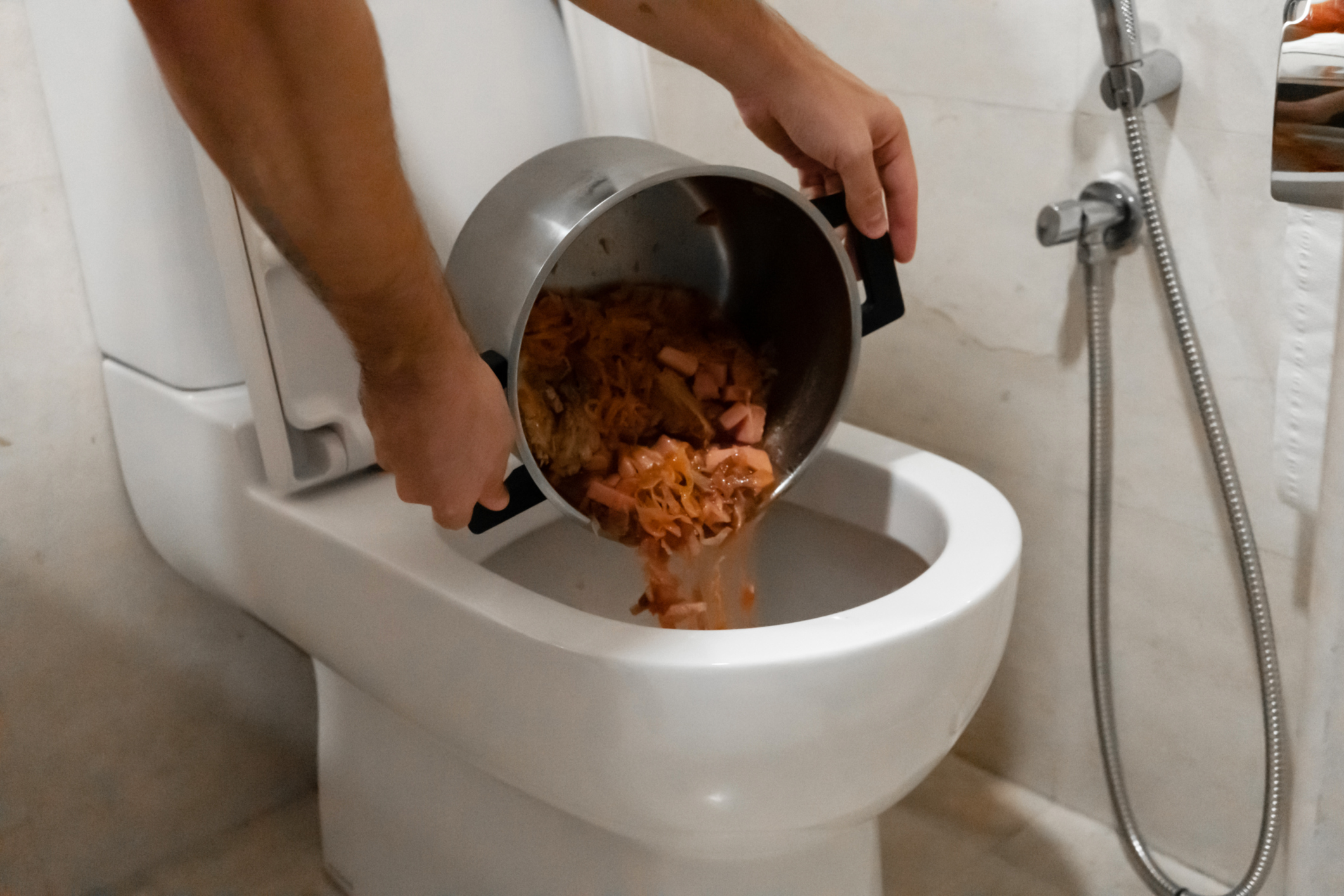They are making several good points regarding Think Twice Before Flushing Food Down Your Toilet overall in this article following next.

Introduction
Many individuals are typically faced with the predicament of what to do with food waste, especially when it comes to leftovers or scraps. One typical concern that emerges is whether it's okay to flush food down the commode. In this write-up, we'll explore the reasons that individuals might take into consideration purging food, the consequences of doing so, and alternative techniques for appropriate disposal.
Reasons that people could consider flushing food
Lack of recognition
Some people may not understand the possible damage triggered by flushing food down the toilet. They may mistakenly think that it's a safe technique.
Comfort
Purging food down the bathroom might appear like a quick and very easy service to throwing away undesirable scraps, particularly when there's no neighboring trash can available.
Idleness
Sometimes, individuals may just pick to flush food out of sheer idleness, without thinking about the consequences of their actions.
Repercussions of flushing food down the toilet
Environmental influence
Food waste that winds up in rivers can contribute to contamination and damage water ecological communities. Furthermore, the water utilized to flush food can stress water sources.
Pipes problems
Flushing food can bring about stopped up pipes and drains pipes, creating costly plumbing repairs and aggravations.
Types of food that ought to not be flushed
Coarse foods
Foods with coarse structures such as celery or corn husks can get entangled in pipes and trigger clogs.
Starchy foods
Starchy foods like pasta and rice can absorb water and swell, causing obstructions in pipes.
Oils and fats
Greasy foods like bacon or food preparation oils ought to never ever be flushed down the bathroom as they can strengthen and create blockages.
Correct disposal methods for food waste
Making use of a waste disposal unit
For homes furnished with garbage disposals, food scraps can be ground up and flushed with the pipes system. Nevertheless, not all foods appropriate for disposal in this fashion.
Recycling
Specific food packaging products can be reused, reducing waste and decreasing ecological influence.
Composting
Composting is an environment-friendly way to deal with food waste. Organic products can be composted and used to improve soil for horticulture.
The importance of correct waste monitoring
Decreasing environmental damage
Correct waste administration methods, such as composting and recycling, help decrease pollution and maintain natural deposits for future generations.
Safeguarding pipes systems
By preventing the method of flushing food down the toilet, house owners can protect against pricey pipes fixings and preserve the honesty of their pipes systems.
Verdict
Finally, while it might be tempting to purge food down the toilet for benefit, it is very important to comprehend the prospective effects of this action. By taking on correct waste administration practices and dealing with food waste sensibly, people can add to much healthier pipes systems and a cleaner environment for all.
FLUSH FOOD DOWN THE TOILET?
FLUSHING FOOD CAN CAUSE BLOCKED DRAINS IN YOUR HOME
All of the plumbing fixtures in your home are connected to the same sewer pipe outside of your home. This outdoor sewer pipe is responsible for transporting all the wastewater from your home to the Council sewer mains. Even small pieces of food that go down the kitchen sink can cause problems for your sewer. It should therefore be obvious that flushing larger bits of food, such as meat, risks a clog in either the toilet itself or the sewer pipes. Flushing greasy food is even more problematic because oil coagulates when it cools, coating the interior lining of your pipes.
THE TOILET IS NOT A BIN
Food isn’t the only thing that people shouldn’t be flushing down the toilet. People use the toilet to dispose of all kinds of things such as tampons, makeup wipes, dental floss, kitty litter and even underwear. Water goes to great lengths to educate residents about the high costs and stress placed on wastewater treatment systems simply from people flushing the wrong stuff down the toilet. It costs taxpayers millions of dollars each year, and homeowners thousands in blocked drain repairs.
FLUSHING FOOD IS A WASTE OF WATER
Flushing food is a waste of our most precious resource - water. In June this year Level 1 water restrictions were introduced to protect water supply from drought conditions. Much of New South Wales continues to be affected by prolonged drought with recent figures revealing up to 97 per cent of the state remains in drought. Depending on whether you have a single or dual flush toilet, every single flush uses between five and 11 litres of water. In the current climate this is a huge amount of water to be wasting on flushing food that should be placed in the bin (or better yet, the compost).
https://www.jabplumbingsolutions.com.au/blog/can-you-flush-food-down-the-toilet

I was shown that write-up about Flushing Food Down the Toilet? from a buddy on our other website. Are you aware of anybody else who is very much interested in the subject? Please feel free to share it. Many thanks for your time. Revisit us soon.
Schedule Today